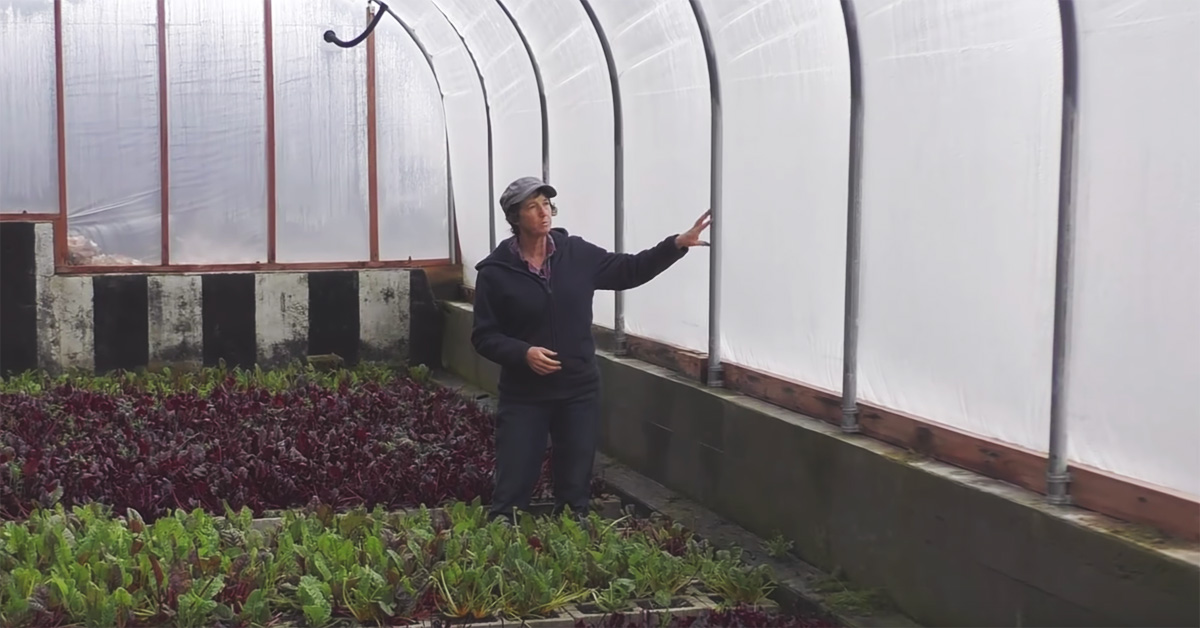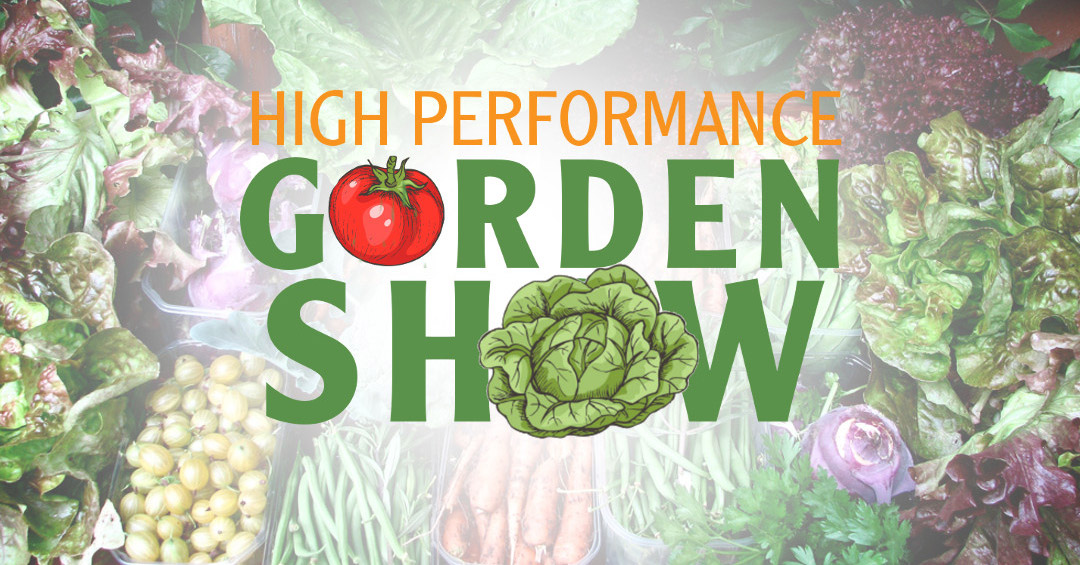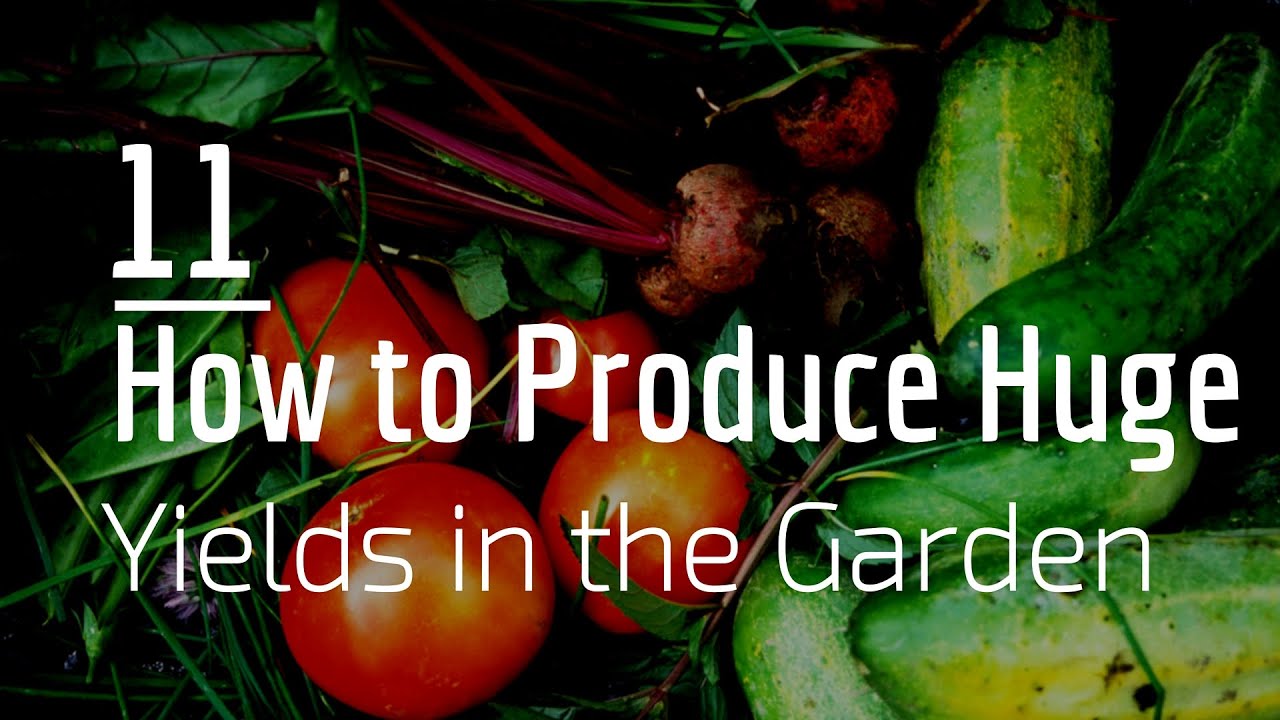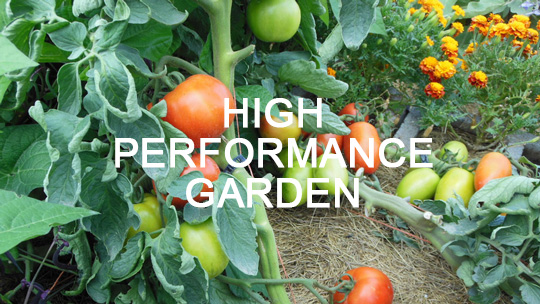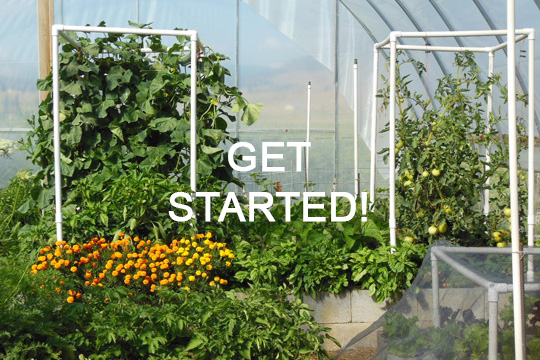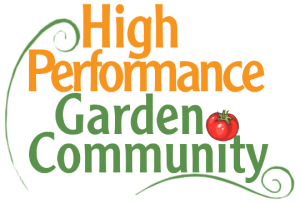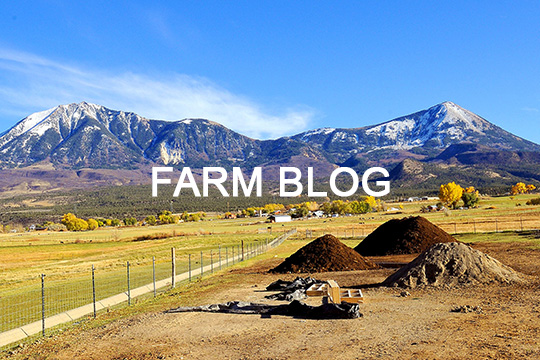Authors note: in the fall of this year as I lingered in the garden I took a moment to enjoy the many changes that my garden goes through in a year. As we spend the winter dreaming of next year’s garden we must first learn from our past garden. Join me as my story starts in the fall, in my garden. Look back at my gardening year so that you can contemplate the beautiful garden of your dreams.
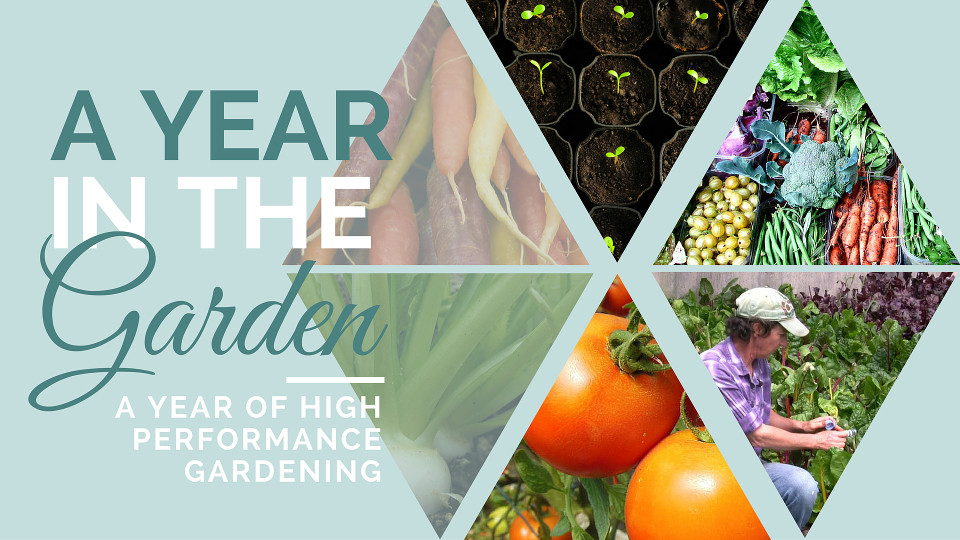 A Year in the Garden
A Year in the Garden
Well, it is late fall and we are putting the garden to rest. There have been several hard frosts this past month and my outdoor plants are pretty much dead. We pulled up the broccoli plants; they were still green and about 3 feet tall with trunks that measure 2 inches in diameter. We fed the broccoli “trees” to the pigs and the sheep; they love to chew on the leaves, branches and stems. Nothing is wasted here on the farm.
As I was going about my business of cleaning out the garden I thought back on the year we just had. There were so many things that I had learned that I wanted to apply in the upcoming year. This is the time of year that I start dreaming about what I am going to grow next season. The winter dormant season is the perfect time to reflect upon what we grew, what we want to grow next year and how to improve on our skills and yields.
I would like to walk you through one of my garden years so you can see what a year in a high performance garden looks like. We will begin in the late fall when we just begin dreaming of next year’s garden.
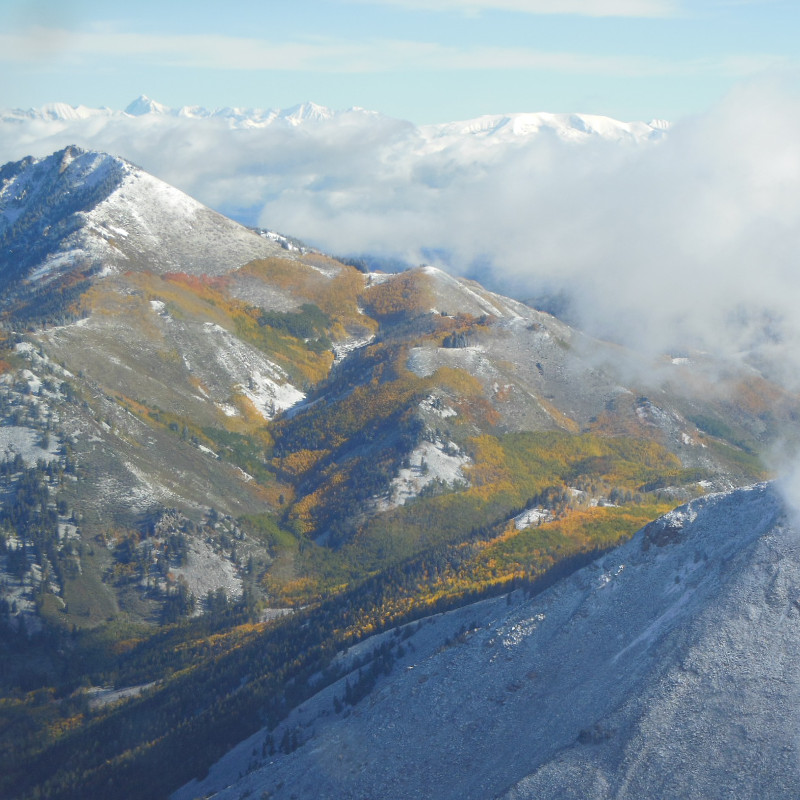 Late Fall
Late Fall
This time of year I am cleaning out the remains of the previous season. I like to take out all the old plants and put down a layer of mulch. If I am really ahead of the game we will put down a 1 inch layer of compost. The compost is then covered by a liberal amount of mulch, my favorite is a mixture of leaves and lawn clippings. We have 11,000 sq. ft. of outdoor grow space and depending on the weather we don’t always get enough time to get every garden cleaned out. If we don’t then we do it in the spring. There is a certain time that we can no longer clean out the garden because of “permafrost”. “Permafrost” is when the top 3 inches of the ground freezes solid so we cannot pull the plant roots up.
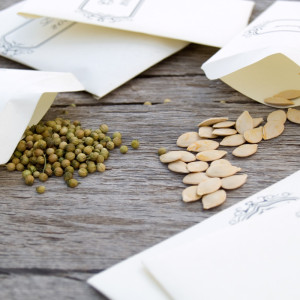 Winter
Winter
After the gardens are put to bed, I dream about next season. Systematically I look over each plant’s yields and decide if I grew enough of that one particular plant. I also consider if the crop was a good or poor harvest. Some years are better than others and some varieties perform better than others. I keep records on how many plants or square feet of each crop that I grew, what the yields were and if I received enough produce from that crop. These records are kept from year to year and that helps me to figure out what I want to grow the next year. When I do this type of planning the next season turns out really well.
The growing systems and the care systems are also given a thorough look over. Was the water system adequate, or does it need improvement? Does the soil need improvement? Do I need better weed control techniques? Every year I strive to improve my system. I want to garden until the day I die; so, I am always thinking about how to make my garden easier. I love the joy that I get when I can grow my own food. Even after 30 years I still bring vegetables into the house and make my family look at what I grew! My gardens are my pride and joy and my main source of sustenance, physically and spiritually. It is great to be in control of what goes into my body. I figure if I do a good job feeding my body good things I can garden longer and the longer I garden the more great food I can put in my body.
I like to do research on gardening systems through the winter then plan to test anything that I think has merit. This keeps me up to date on the latest and greatest gardening techniques! I love to peruse the seed catalogs and see the new flowers and vegetables that we can get for next year. Once I have looked over everything it is time to plan the garden. In my indoor gardens I start the seeds in January so I have to get my seeds picked out. The outdoor gardens I can plant starting in April but I will start some plants indoors as early as February.
To plan the garden I go back to the notes that I created from the years past. I adjust each crop for our needs then I select the seeds. By having a plan I can grow just what we need and not have to take care of extra plants that we will not harvest from. It is important to keep the garden just the right size. Over the years our needs and tastes have changed and so has our garden.
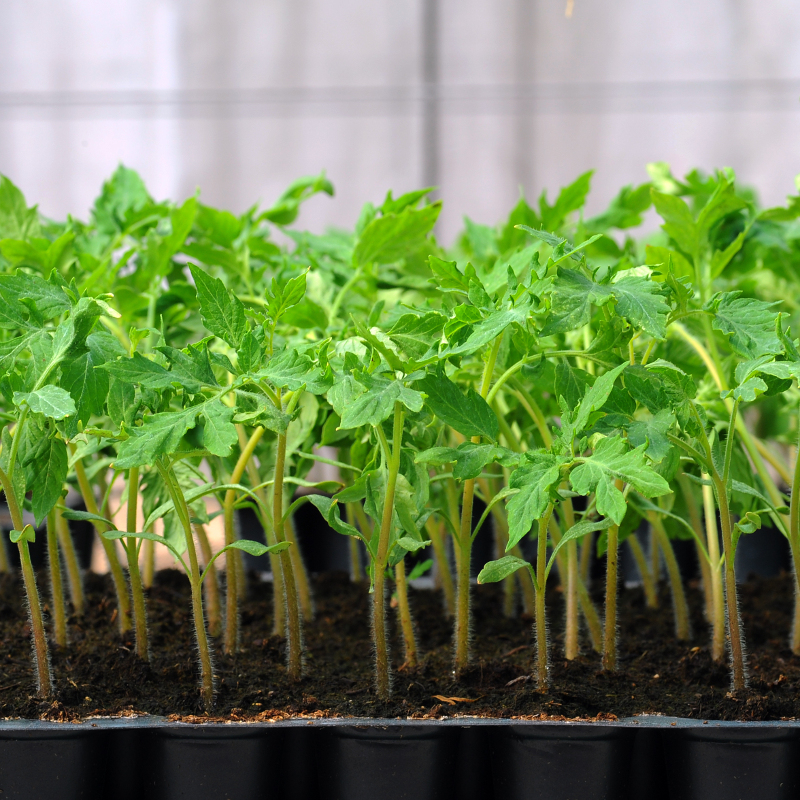 Late Winter and Spring
Late Winter and Spring
Now that I know what, and where I will be growing all my plants, I need to get some of them started. I start my tomatoes January 15th. They will be planted in the tomato greenhouse by March 10 and we will have tomatoes to eat by June 1. Because of my planning and note taking I can estimate my crops very closely, in terms of yields and timing.
In late winter I will start my first crop of cold weather plants like lettuce, spinach, broccoli and cabbage. I plant these plants in succession plantings so I will have a continuous supply of these plants all season. By February we are starting to plant all the indoor greenhouses. We have 9000 sq ft of indoor space. I grow greens all winter then start to change those plants out for a spring crops by February. For the warm weather plants like peppers and eggplant I will start them the first week of February in the greenhouse to go out in the gardens by May.
The cool weather plants can go into your garden 4 weeks ahead of your first frost date. Once you know your frost dates then you can set the entire year in the garden into motion. The warm weather crops can go in at your last average frost date. I usually look at the 10 day forecast on my last average frost date and if it is frost free I put in my warm weather plants. With the greenhouses we have 2 frost dates. Our greenhouses have a last average frost date of March 1. So I can plant the cool weather crops by February 1 and the warm weather plants by March 1. I have covers so I know that they plants will be fine.
Then outdoors in the 11,000 sq ft gardens, we have an average frost date of May 15. I plant the cool weather crops outside around April 15 and the warm weather crops around May 15 if the forecast looks good. By taking notes and paying attention I have honed this system to work perfectly for my gardens. If you take the time to find your first and last frost dates in your area you can begin to create a system for your area. (If you don’t know what frost dates are or you want to find yours go read the article How to Plan Your Garden According to Your Region.) You garden will not need to be as big as mine. As a matter of fact, in high performance garden system you can grow enough food for 2-3 people in just 128 sq ft. I grow so much because we serve a CSA, two restaurants and six stores plus ourselves and staff.
So we begin planting indoors in February and finish planting outdoors about June 15. In the middle of that we birth the lambs March 15- May 15. This is the time of no sleep and it is the time of life in abundance. Now you know why I need the very best food , so I can keep up with myself! We also start to milk the sheep at this time too.
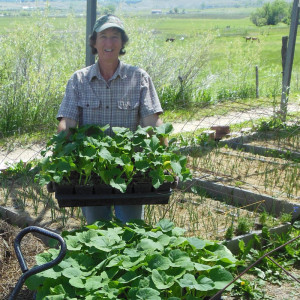 Early Summer
Early Summer
Now it is early summer and this is the beginning of the heavy harvest season. We have already been picking greens (we harvest 50 weeks out of the year) but now the tomatoes, beans, peas, cucumbers and other summer crops are kicking in. This is also the time of the year where the weed battle begins. Most people can keep up with the spring weed but once they start to harvest and take vacations all bets are off. We handle the weeds with lots of mulch and never let the weeds go to seed. I figure one weed pulled is like 100 weeds that I don’t have to pull. This is the time of year that we mulch everything again. The mulch does 3 things for us. It feeds our microbes (we are an organic farm) it holds in the moisture and it smothers the weeds. I will say that last part again, the mulch smothers the weeds. If you don’t want to weed then mulch!
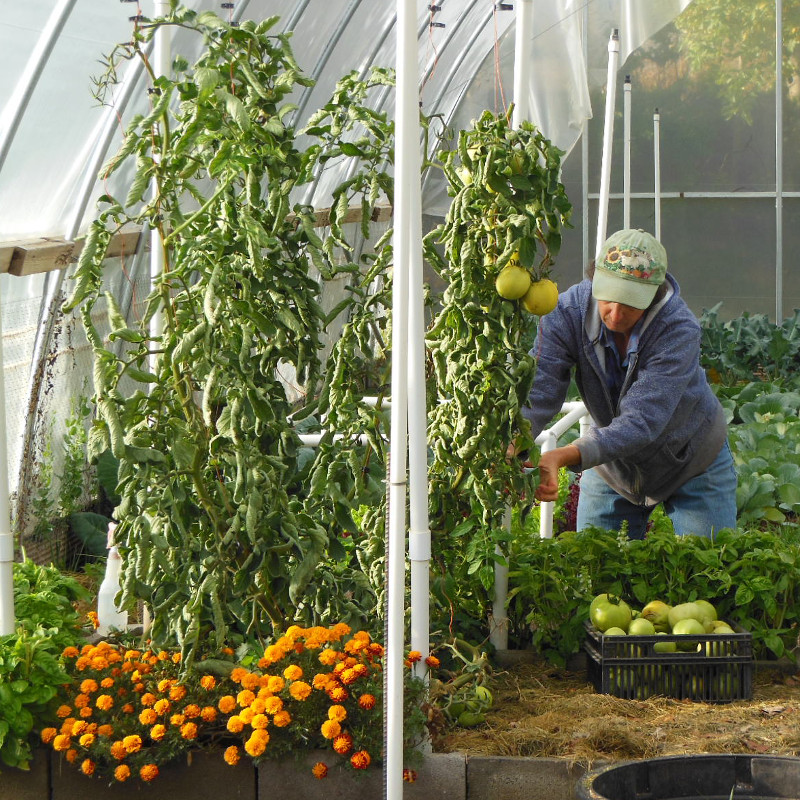 Summer
Summer
In the summer we settle into a routine of watering, mulching and harvest. The weeds are under control and we sail into the fall pulling out many pounds of produce each week. This is also the time I start preserving for the winter. I love to eat my home grown food all year. Because of my winter planning I know how much of each vegetable I want to put up for the winter.
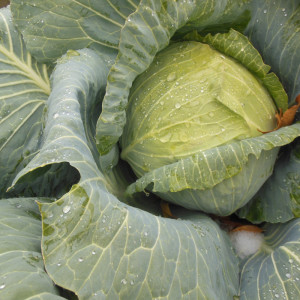 Fall
Fall
By fall the larder is full, everyone has had their fill of zucchini and we are ready for the first frost. I love fall the most. The majority of the work is done for the year and we have plenty of food for winter. We scramble around getting the last of the crops in the root cellar, freezer or pantry for the winter and ready to plant the winter greens in the greenhouses. We take a little time to marvel at our bounty and enjoy a few warm sunny days raking leaves.
We’ve come full circle. It’s back to late fall with its hard killing frosts; a time to put the outdoor gardens to bed. This is the time of reflection on the year and a time to dream about next year. This is a glance at a year in my gardens and life on the farm.
If you are looking back on your gardening year or looking ahead to your very first garden year now is the time to begin planning. If you are interested in learning more about high performance garden cycles then join us in the High Performance Garden Community. In this free online educational outreach you can spend the garden year with me learning the techniques and systems that we use to create our bounty and amazing garden life.
As this new year rolls around and the world is still focused on creating a more sustainable environment, I want to challenge you to teach someone else to garden. If you don’t feel that you know enough simply invite them to learn along with you. Find someone to learn with you no matter your skill level and find ways to begin using high performance garden techniques in your garden.
Imagine a world where less of our produce is being trucked or flown to us, but found in our backyards. A productive, easy, beautiful and organic garden is the one for your modern schedule. Learn more about high performance gardens as you plan for the future. And don’t forget to invite someone along for your journey in the high performance garden community!
May your garden be easy, fun, productive and always organic,
Lynn

